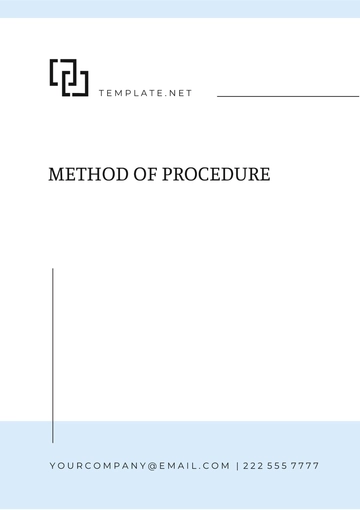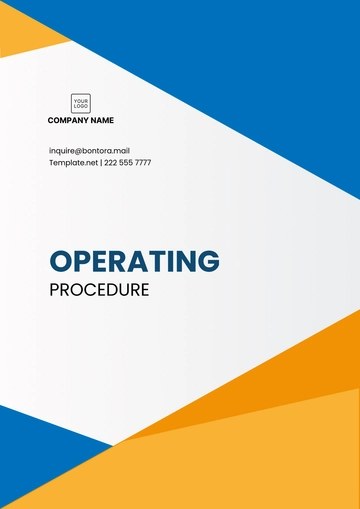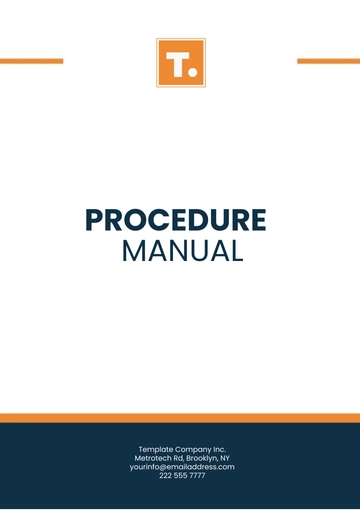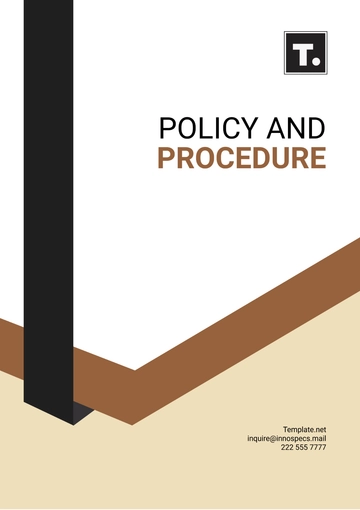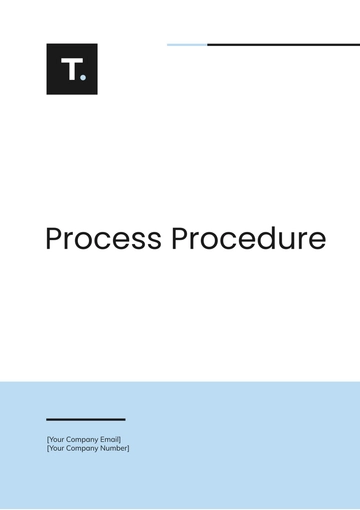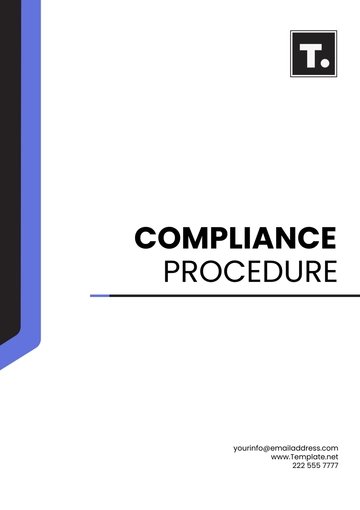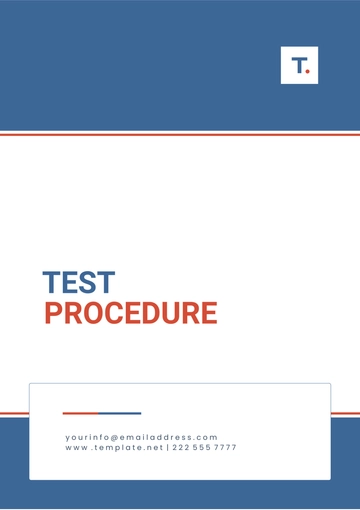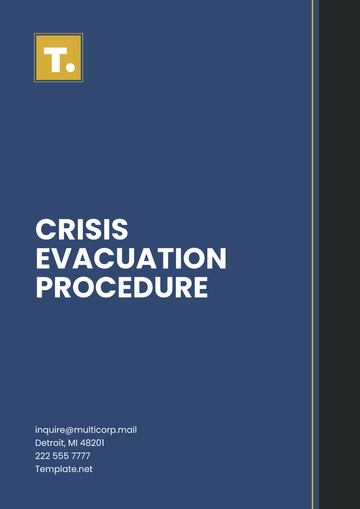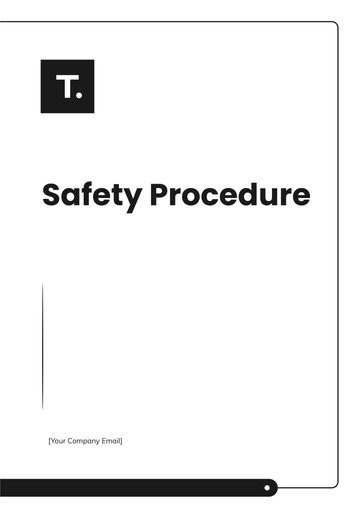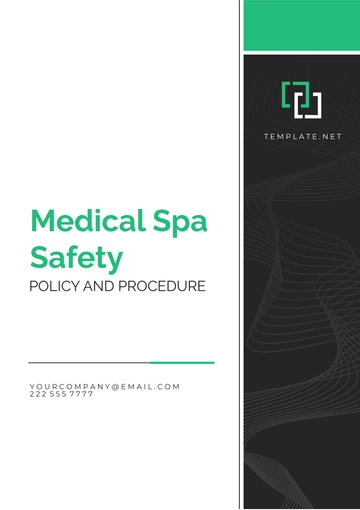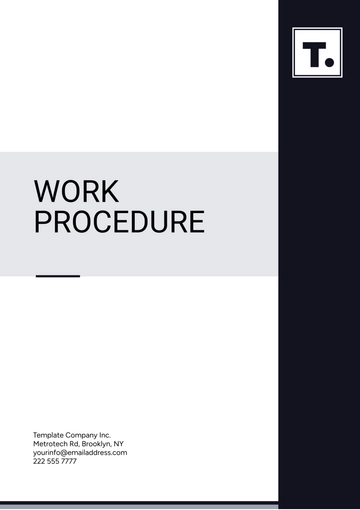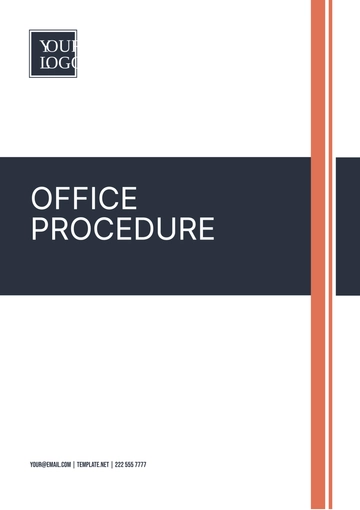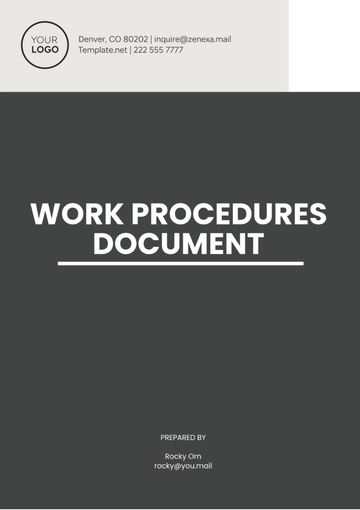Free Agriculture Environmental Compliance Procedure
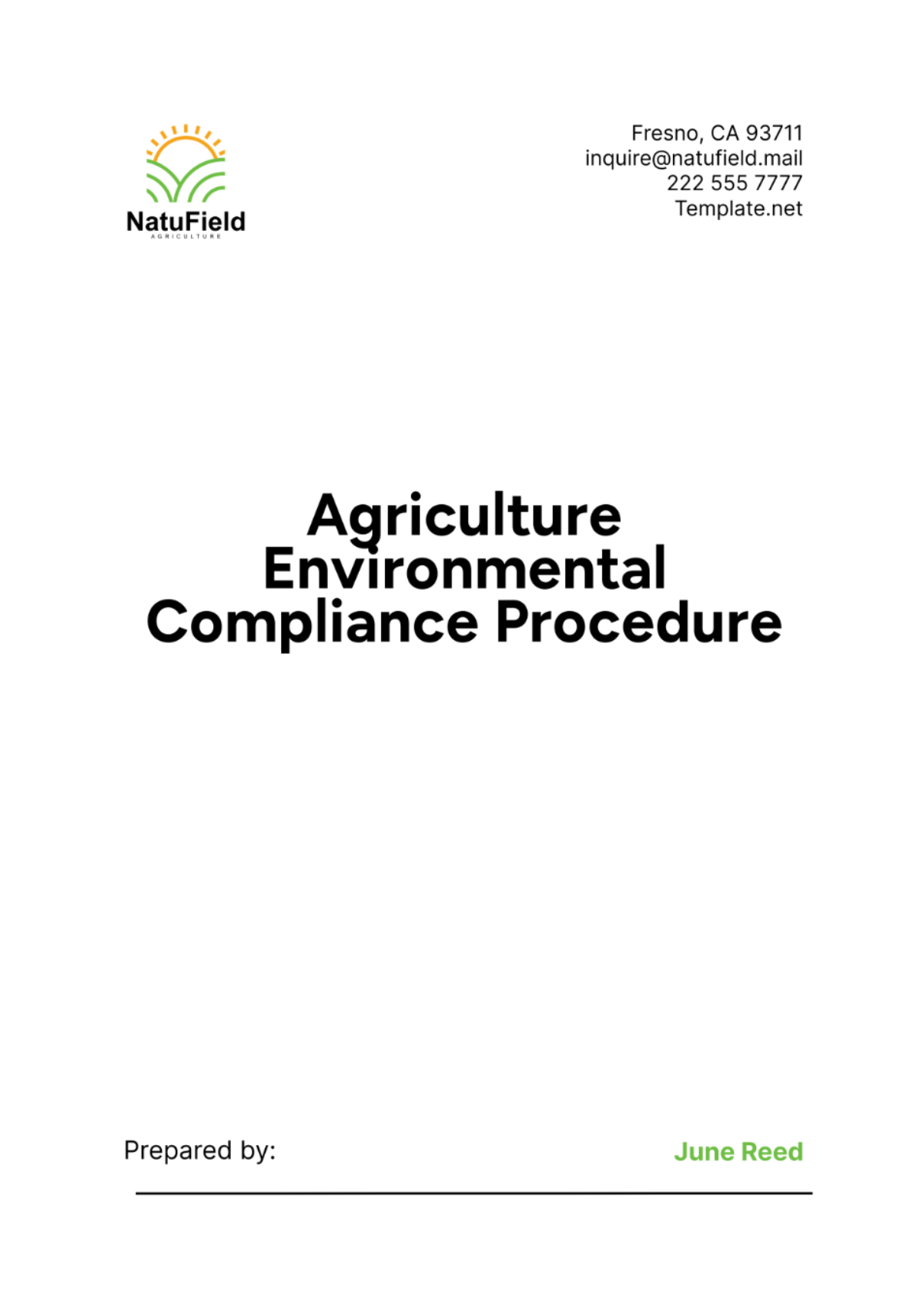
I. Introduction
A. Purpose of the Procedure
The Agriculture Environmental Compliance Procedure (AECP) is designed to integrate environmental stewardship into every aspect of [Your Company Name]'s agricultural operations. By adhering to this procedure, we aim to minimize environmental impact, ensure compliance with regulatory requirements, and promote sustainable practices that benefit both our business and the communities we operate in.
B. Scope of Application
This procedure applies to all personnel, contractors, and visitors involved in activities conducted by [Your Company Name] that have the potential to impact the environment. It encompasses agricultural practices such as soil management, water usage, pesticide application, and waste management across all our farms and facilities.
C. Definitions and Acronyms
Environmental Aspect: Any element of our operations that can interact with the environment, influencing sustainability or affecting natural resources.
Environmental Impact: The result of an environmental aspect interacting with the environment, potentially causing harm or benefit.
Regulatory Authorities: Government bodies responsible for enforcing environmental laws and regulations applicable to our agricultural activities.
II. Regulatory Framework
A. Overview of Relevant Environmental Regulations
[Your Company Name] conducts its operations within a comprehensive regulatory framework that encompasses various levels of jurisdiction. At the federal level, our activities are governed by critical environmental statutes such as the Clean Water Act and the Clean Air Act.
We adhere to numerous regulations established by the Environmental Protection Agency (EPA), which are designed to protect natural resources and public health. Beyond federal requirements, we are also subject to state-specific regulations that vary according to the unique environmental policies of each state in which we operate. These state regulations address a wide range of environmental concerns, including water quality standards, permissible air emissions, the safe use and application of pesticides, and the conservation of land resources.
Moreover, local laws significantly influence our regulatory framework by establishing additional rules and limitations customized to the unique requirements and circumstances of the communities in which we operate our agricultural activities. Together, this complex network of federal, state, and local regulations guarantees that our practices are environmentally responsible and adhere to the highest standards of stewardship and sustainability.
B. Applicability to Agricultural Operations
Our responsibilities related to compliance encompass every stage and facet of agricultural activities, beginning with the initial phase of land preparation and extending through the entire process of crop cultivation, all the way to the tasks involved in post-harvest handling and the appropriate disposal of agricultural waste. It is of utmost importance that we strictly adhere to these regulations. Doing so is essential for several critical reasons: it helps us mitigate potential environmental risks, ensures that we avoid any legal penalties that could arise from non-compliance, and is a key factor in maintaining the validity and standing of our operational license.
C. Responsibilities under Regulatory Authorities
[Your Company Name] is dedicated to meeting all of its obligations as required by regulatory authorities. This steadfast commitment encompasses several key activities. First, [Your Company Name] ensures that it obtains all necessary permits that are essential for its operations, aligning with both local and national regulatory requirements. Additionally, the company is committed to the accurate and timely reporting of environmental data, recognizing the importance of transparency and accountability in its environmental stewardship. Moreover, the company engages proactively with regulatory inspections, allowing it to showcase its compliance with environmental laws and standards, thereby highlighting its commitment to environmental responsibility and sustainable practices.
III. Environmental Risk Assessment
A. Identification of Environmental Aspects and Impacts
By conducting a comprehensive and methodical evaluation of our operations, we are able to identify various environmental aspects. These aspects include, but are not limited to, soil erosion, water consumption, pesticide usage, and energy consumption. Each of these factors has the potential to significantly impact the biodiversity within the local ecosystems, the overall health of the soil, the availability and quality of water resources, and the quality of the air. This thorough assessment allows us to recognize and understand the extent to which our activities may affect the surrounding natural environment.
B. Assessment of Potential Risks and Hazards
Once we have identified the specific environmental aspects, we proceed to thoroughly assess the potential risks and hazards that they might present. This comprehensive assessment involves a detailed evaluation of the likelihood and severity of any possible environmental impacts. In conducting this evaluation, we consider a wide range of factors. These include the proximity of the identified aspects to sensitive habitats, adherence to regulatory thresholds set by relevant authorities, and a review of historical data on previous environmental incidents. By taking all these elements into account, we aim to gain a clear understanding of the potential environmental consequences and the associated risks.
C. Evaluation of Legal and Regulatory Compliance Requirements
We make it a point to consistently assess and re-evaluate our practices in light of legal and regulatory requirements to ensure that we remain fully compliant. This ongoing evaluation process involves conducting periodic reviews of our permit conditions to ensure their current applicability. We also stay informed about any new regulatory updates and changes, adapting our operational procedures accordingly. Additionally, we amend our practices as needed to align with evolving environmental standards and best practices, ensuring that our operations not only meet but exceed the expectations set forth by the governing authorities.
IV. Environmental Management Practices
A. Soil and Water Conservation Measures
Erosion Control Techniques
Implementing contour plowing and cover cropping practices to reduce soil erosion and maintain soil fertility.
Installing vegetative buffers along waterways and using mulching techniques to stabilize soil and prevent sediment runoff.
Water Management Practices
Utilizing precision irrigation technologies to optimize water use efficiency and minimize water runoff.
Implementing soil moisture monitoring systems and scheduling irrigation based on crop water requirements and weather conditions.
B. Pesticide and Chemical Management
Storage and Handling Procedures
Storing pesticides in dedicated, secure facilities equipped with spill containment measures and secondary containment systems.
Labeling chemical containers with clear, legible instructions for proper handling, storage conditions, and emergency response procedures.
Application Best Practices
Training personnel on integrated pest management (IPM) strategies to minimize pesticide use and reduce environmental impact.
Conducting regular equipment calibration and maintenance to ensure accurate and precise application of pesticides.
C. Waste Management
Recycling and Reuse Programs
Implementing recycling programs for agricultural plastic waste, such as irrigation tubing and pesticide containers.
Reusing organic waste materials, such as crop residues and manure, for composting or soil amendment purposes.
Disposal Procedures for Hazardous and Non-Hazardous Waste
Segregating and properly disposing of hazardous agricultural chemicals and waste materials in compliance with local, state, and federal regulations.
Establishing protocols for the safe disposal of non-hazardous waste materials, such as crop debris and packaging materials, to minimize environmental impact.
V. Monitoring and Reporting
A. Monitoring Parameters and Frequency
We engage in routine and systematic observation and measurement of crucial environmental indicators, including the quality of the soil, the condition of water bodies, the levels of pollutants emitted into the air, and the presence of pesticide residues within the environment. The intervals at which these monitoring activities are conducted are determined by a combination of regulatory guidelines, changes in environmental conditions throughout different seasons, and the nature and intensity of our operational processes. This approach is designed to ensure that any potential adverse effects on the environment are identified and addressed in a timely manner.
B. Data Collection and Analysis Methods
The information that is gathered through activities designed to monitor environmental conditions undergoes a meticulous and organized process. Initially, data is carefully recorded for accuracy and completeness, then rigorously validated to confirm reliability. Following validation, it undergoes widely recognized analytical methods, including statistical and trend analyses. The data is also compared with regulatory limits or internal benchmarks for compliance and improvement opportunities. This thorough process ensures legal compliance and enhances environmental performance.
C. Reporting Requirements to Regulatory Agencies
We compile comprehensive environmental reports containing monitoring results, compliance status, and any corrective actions taken. Reports are submitted to relevant regulatory agencies as per regulatory deadlines and requirements, demonstrating our commitment to transparency and regulatory compliance.
VI. Training and Awareness
A. Training Programs for Employees
All personnel involved in agricultural operations undergo regular training sessions on environmental management practices, regulatory compliance, and emergency response procedures. Training programs are tailored to specific job roles and responsibilities, ensuring that employees are equipped with the knowledge and skills needed to implement environmental best practices effectively.
B. Awareness Campaigns for Environmental Stewardship
We promote environmental stewardship through ongoing awareness campaigns, workshops, and educational materials aimed at fostering a culture of environmental responsibility among employees, contractors, and stakeholders. These campaigns emphasize the importance of sustainable agriculture, biodiversity conservation, and community engagement in environmental protection efforts.
C. Competence Evaluation and Certification
Employee competence in environmental management practices is periodically evaluated through assessments, quizzes, and practical exercises. Certification programs may be implemented to recognize and reward employees who demonstrate proficiency in implementing environmental policies and procedures, reinforcing our commitment to continuous improvement and compliance.
VII. Emergency Preparedness and Response
A. Emergency Response Plan
[Your Company Name] has developed and upholds an extensive and detailed Emergency Response Plan, often abbreviated as ERP. This comprehensive plan meticulously delineates the procedures that must be followed in the event of various environmental emergencies. Such emergencies may include, but are not limited to, chemical spills, fires, natural disasters, and incidents involving hazardous materials. The Emergency Response Plan includes emergency contacts, evacuation protocols, and personnel roles to ensure a swift, safe response to crises, protecting everyone's well-being.
B. Spill Prevention and Containment Procedures
Preventive measures are implemented to minimize the risk of environmental incidents, including regular inspection and maintenance of storage facilities, spill containment kits, and emergency response equipment. Spill prevention and containment procedures are practiced through drills and simulations to ensure readiness and effectiveness in handling environmental emergencies.
C. Incident Reporting and Investigation Protocols
All environmental incidents, including spills, leaks, and other emergencies, are promptly reported to designated personnel and documented according to established protocols. Investigations are conducted to determine the root causes of incidents, identify corrective actions, and implement measures to prevent recurrence, thereby enhancing our environmental management practices and responsiveness.
VIII. Auditing and Review
A. Internal Audit Schedule and Procedures
Internal audits of our environmental management system are conducted at regular intervals by trained auditors to assess compliance with regulatory requirements, effectiveness of environmental controls, and adherence to company policies. Audit findings and recommendations are documented, reviewed by management, and used to drive continuous improvement initiatives.
B. Corrective and Preventive Actions
Findings from internal audits are systematically reviewed, and corrective actions are assigned to responsible personnel to address identified non-conformities or areas needing improvement. Preventive actions are proactively implemented to mitigate potential environmental risks and enhance operational efficiencies, ensuring ongoing compliance and sustainability.
C. Management Review and Continuous Improvement
Senior management conducts periodic reviews of environmental performance, audit results, and compliance status to evaluate the effectiveness of our environmental management system. Management reviews include strategic discussions on environmental goals, resource allocation, and opportunities for innovation and continuous improvement in environmental stewardship.
IX. Documentation and Recordkeeping
A. Documentation Requirements
All documentation related to environmental monitoring, training records, audits, and compliance activities are maintained in a central repository and organized according to established document control procedures. Documentation includes records of regulatory permits, monitoring data, incident reports, and correspondence with regulatory agencies to support transparency and accountability.
B. Recordkeeping Procedures
Records are retained for specified retention periods as per regulatory requirements and company policies. Electronic records are backed up regularly to prevent loss or damage, ensuring data integrity and accessibility for regulatory inspections, audits, and management reviews.
C. Document Control and Versioning
Document control procedures ensure that only current and approved versions of documents are used for operational activities and compliance purposes. Changes to documents, including revisions, updates, and approvals, are documented, reviewed, and communicated to relevant personnel to maintain document accuracy and regulatory compliance.
X. Compliance Verification and Assurance
A. Verification Methods and Tools
Compliance verification activities include routine inspections, self-assessments, and third-party audits conducted by qualified personnel or external auditors. Verification methods may involve document reviews, site inspections, and interviews with personnel to verify adherence to environmental policies, regulatory requirements, and industry standards.
B. Compliance Assurance Plan
A Compliance Assurance Plan (CAP) outlines strategies and activities to ensure ongoing compliance with environmental regulations and corporate policies. The CAP includes clear objectives, action plans, responsibilities, and performance indicators to monitor and evaluate compliance performance, drive continuous improvement, and mitigate environmental risks.
C. External Audits and Certification Processes
[Your Company Name] participates in external audits and certification processes conducted by regulatory agencies, independent auditors, or certification bodies to validate compliance with recognized environmental standards and industry best practices. External audits assess our environmental management system's effectiveness, identify opportunities for enhancement, and provide assurance to stakeholders of our commitment to environmental stewardship and regulatory compliance.
- 100% Customizable, free editor
- Access 1 Million+ Templates, photo’s & graphics
- Download or share as a template
- Click and replace photos, graphics, text, backgrounds
- Resize, crop, AI write & more
- Access advanced editor
Ensure compliance seamlessly with the Agriculture Environmental Compliance Procedure Template from Template.net. This editable and customizable document empowers agricultural businesses to adapt swiftly to regulatory changes. With intuitive features and an AI Editor Tool, craft tailored environmental management protocols effortlessly. Streamline operations while enhancing sustainability practices with this comprehensive template.



